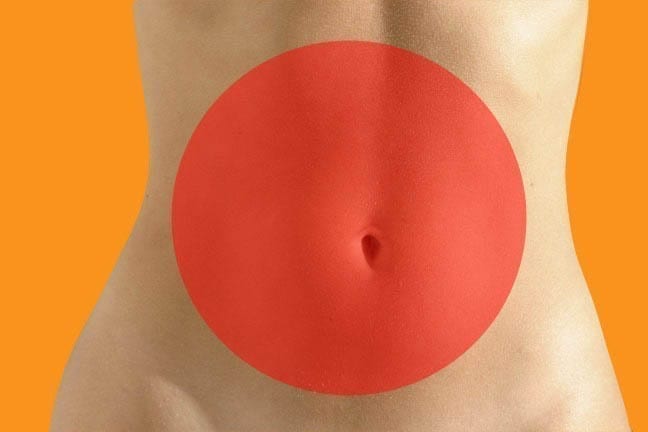How does skin cancer escape detection by a leading skin expert? It’s much easier than you think.When San Antonio, Texas, dermatologist Vivian Bucay, saw flaky skin in her navel, she didn’t think much of it, but the mom of three took a skin biopsy to be on the safe side and to see what may be causing the shedding.The results were both surprising and significant: Cancer had been growing out of sight in her belly button for some time, and the area now housed a stage four melanoma, the deadliest of skin cancers.“It’s sobering to realize how insidious skin cancer, and particularly, melanoma, can be,” says Dr. Bucay, who immediately sought treatment and is now thankfully cancer-free. The incident drives home just how easy it can be to miss warning signs of skin cancer, when it can even escape the notice of an expert. “I was really lucky to have had great medical care and believe more strongly than ever in getting anything that looks even vaguely suspicious checked out now,” she adds.
 |
Melanoma is responsible for 80 percent of skin cancer deaths, is the most common cancer in U.S. women from ages 25-29 and has increased by 50 percent among women aged 15-39.As a resident of a sunny southwestern state, Bucay sees many skin cancer cases. “No one can say for sure if the sun was responsible for my melanoma, but I certainly did my share of sunbathing in my teens before we realized how dangerous it is,” she shares. In addition to damaging radiation rays, unprotected exposure to the sun also makes skin susceptible to cancer in other ways.A type of white blood cell found in the epidermis known as Langerhans cells play an integral role in keeping you healthy. These cells capture antigens that trigger reactions like infections and cancer, and communicate with immune system cells that then fight them off. “Langerhans cells are very sensitive to UVA and UVB radiation—whether from the sun or a tanning bed, they can be depleted in 15 minutes worth of exposure,” explains Bucay. In turn, your natural resistance to a threat like skin cancer is weakened.Fortunately, there are many easy ways to arm yourself against skin cancer, which has a high 98 percent survival rate if caught early. When found in a late stage, that rate plummets to 16 percent.“Sun protection is far more encompassing than simply applying sunscreen,” says Bucay. Here are her top tips for preventing and spotting skin cancer, including the kind that she herself nearly missed.Check unusual places“Do a self-exam every month and get to know what is normal for you,” advises Bucay. Be sure to check in odd areas where skin cancer can hide, like inside the navel, between the toes and under the feet, as well as on eyelids and palms. Ask your hairdresser or a friend to check your scalp and behind your ears, and look for unusual dark stripes under the nails. If you always wear nail polish or gel, be sure to check when changing out your color or while having gel nails filled.Ingest vitamin DA recent barrage of media reports on how low vitamin D levels can adversely affect everything from immunity to mood has many people scrambling to sit out in the sun to absorb this nutrient, but Bucay says you may inadvertently do more harm than good. “Don’t rely on the sun for your vitamin D, supplements are an effective and much safer source of this important vitamin,” she says. You can also find vitamin D-fortified yogurt, milk, cereals and soy and almond milk at the grocery store.Take an oral supplement“Published studies have shown that powerful antioxidant NAC (N-acetylcysteine) reduces the effects of damaging UV rays on precancerous moles,” says Bucay, who recommends 1200-2400 mg daily. There’s also substantial evidence that another antioxidant known as PLE decreases the effects of UVA and UVB rays and radiation on skin, and even improves DNA damage, adds Bucay. You can find PLE in the popular over-the-counter Heliocare supplement.Get regular examsEveryone should see a dermatologist yearly for a skin exam. If you have a higher risk of skin cancer, have already had lesions removed or have lots of freckles and moles, go every six months. And if you’ve had melanoma or a family history of it, see your ophthalmologist for a yearly eye exam and mention it to the doctor—melanoma can occur inside the eyes, says Bucay. Those who have been in a tanning bed have a higher risk of eye melanoma.Make sun protection a daily habit“Rain or shine and no matter the season, wear sunscreen daily!” urges Bucay. Apply sunscreen to your body before getting dressed in case fabric is light enough to allow UVA and UVB rays to penetrate through. (We like fast-absorbing spray formulas such as from that don’t smell or sink into clothing.) Hats with at least a three-inch brim and sunglasses that are labeled with UV protection are all excellent ways to boost protection.




































